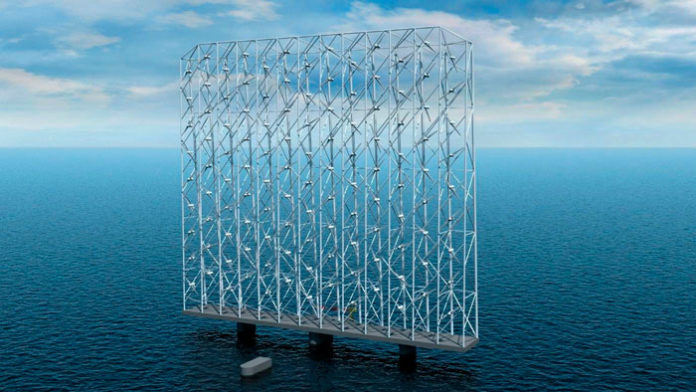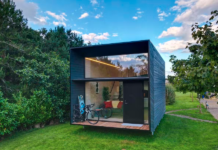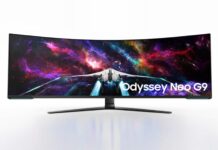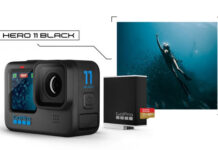Norwegian company Windcatching Systems (WCS) is developing a revolutionary technology that uses offshore wind as a power source, which will significantly improve the efficiency of wind turbines. The floating windcatchers were created in partnership with oil and gas company Aibel, which brought developments widely used in the design of offshore oil platforms to the new energy industry.
The Wind Catching structure is impressive in size: its height above the water reaches 325 meters, which is higher than the Eiffel Tower. The giant flat structure is filled with relatively small wind turbines throughout the whole area. In total, there are up to 120 wind generators mounted there. Wind Catching is anchored to the seabed using a method similar to that used in offshore oil and gas platforms. Power is transmitted to land through a “mother ship” that collects electricity from multiple Wind Catching platforms.
The total capacity of one 325 meter Wind Catching plant is 15 MW. Small Vestas V236 wind turbines can generate electricity at wind speeds above 43 km/h (11-12 m/s), while traditional wind turbines are limited to this speed and cannot generate electricity at higher speeds.
As a result, a single Wind Catching unit generates 5 times more energy per year than a traditional wind generator of the same capacity of 15 MW. The energy produced by one Windcatcher is enough to cover the electricity needs of 80,000 average European households.
The ease of installation and availability of the turbines facilitates their maintenance. The generators are lifted using their own elevator and do not require special equipment and marine cranes during their installation or repair. According to the developers, the service life of the Wind Catching turbine is 50 years, which is 20 years longer than that of modern sea-based wind generators.
During the technology testing phase, the cost of electricity from the Wind Catching plant exceeds the cost of generating energy from land-based solar and wind power plants. However, compared to offshore wind turbines, Wind Catching energy is somewhat cheaper. At the same time, WCS plants occupy five times less area than similar offshore generators and do not take any of the expensive European lands, vast areas of which are occupied by ground-based “green” power plants.
The testing phase of WCS installations will last until the end of 2022, and if the high efficiency of the technology is confirmed, the serial production of Windcatchers will begin in 2023-2024.







